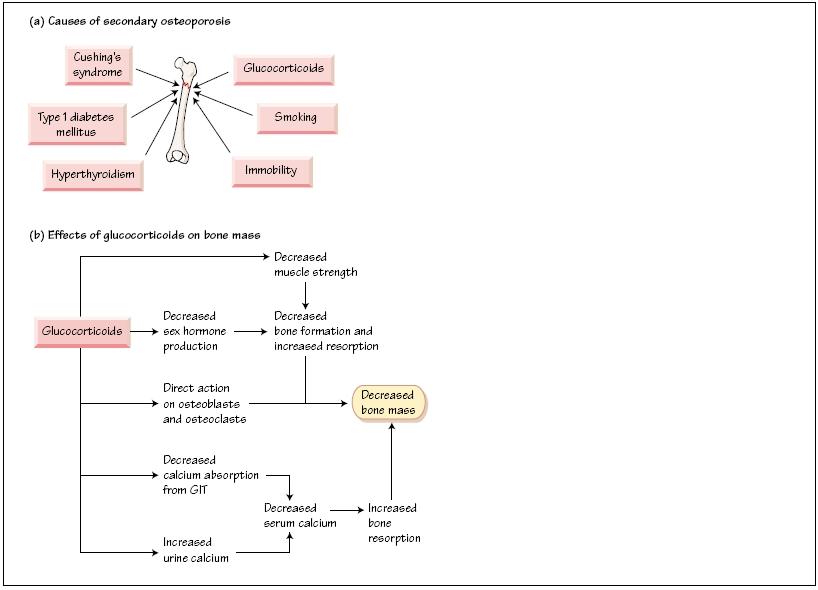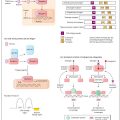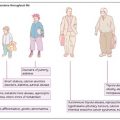
Table 55.1 Prevention and treatment of osteoporosis
| Secondary causes of osteoporosis | |
| Endocrine/metabolic | Hypogonadism Thyrotoxicosis Hyperparathyroidism Cushing’s syndrome Hyperprolactinaemia Homocysteinuria |
| Iatrogenic | Glucocorticoid therapy Heparin |
| Malignant disease | Myeloma Leukaemia Lymphoma |
| GI disease | Malabsorption Chronic liver disease |
| Connective tissue disorders | Osteogenesis imperfecta Marfan’s syndrome Ehlers-Danlos syndrome |
| Others | Chronic renal failure Immobilization Alcohol abuse |
Osteoporosis may occur as a secondary problem in patients with a range of endocrine and other disorders (Fig. 55a; Table 55.1). A high proportion of patients treated chronically with glucocorticoids develop osteoporosis. It may develop in patients immobilized for long periods, when bone resorption develops with consequent hypercalciuria and hypercalcaemia, especially in younger patients in whom bone turnover is normally rapid. Osteoporosis has been observed in astronauts, presumably due to the loss of gravitational effects, although the aetiology of this phenomenon is unknown. Hereditary disorders of collagen expression and metabolism may result in osteoporosis. These include Ehlers–Danlos syndrome, homocysteinuria and osteogenesis imperfecta.
The vast majority of patients with osteoporosis have the primary condition but causes of secondary osteoporosis should always be sought when undertaking clinical assessment.
Glucocorticoids and osteoporosis
Glucocorticoids, used to treat inflammatory disorders, cause osteoporosis, affecting predominantly the trabecular bone of the axial skeleton such that vertebral fractures are more common than those of the hip. Glucocorticoids cause osteoporosis through a wide variety of actions (Fig. 55b).
Direct actions.
Stay updated, free articles. Join our Telegram channel

Full access? Get Clinical Tree








